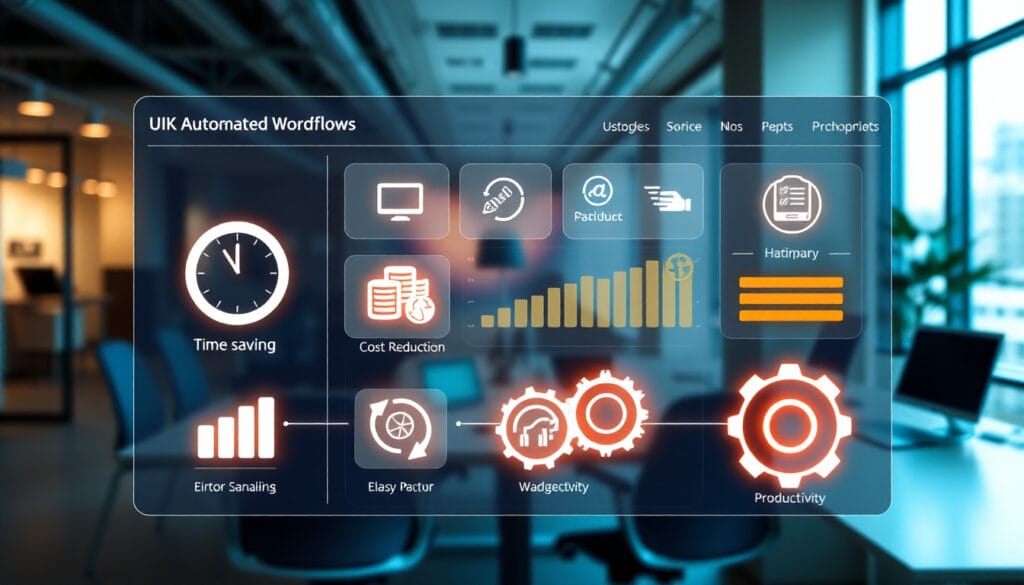BPA vs Manual Process Management UK: A 2025 Guide for SME Efficiency
UK SMEs are quickly waking up to a powerful reality: the manual way of doing things is holding them back. Whether it’s chasing invoices, onboarding employees, or managing compliance reports, traditional workflows cost time, money, and energy. That’s where Business Process Automation (BPA) comes in — the smarter, faster, and more efficient way to run your business in 2025.
This guide breaks down the critical differences between BPA vs manual processes, showing you where UK businesses are gaining a competitive edge by going digital.
What Is the Difference Between BPA and Manual Processes?
BPA uses software and digital tools to automate recurring tasks, while manual processes rely entirely on human effort — think paper forms, spreadsheets, emails.

Manual workflows slow down operations and leave room for human error. In contrast, Business Process Automation (BPA) streamlines these tasks through digital workflows, helping businesses increase efficiency, reduce cost, and free up staff for more valuable work.
Why Are UK SMEs Moving Away from Manual Operations?
Because automation dramatically improves UK SME efficiency.
SMEs in the UK are under pressure to do more with less. Rising labour costs, tighter regulations, and increasing competition mean businesses can’t afford the inefficiencies of manual processes. According to our internal research, SMEs that adopted process digitisation saw a 36% improvement in turnaround time.
Explore AI automation agency to see how local SMEs are scaling through intelligent systems.
What Are the Top Benefits of Business Process Automation?
BPA leads to cost savings, accuracy, compliance, and scalability.
Here are key automation wins UK businesses are achieving:
- Reduced Errors: Automated data entry reduces mistakes by 90%.
- Faster Approvals: Workflows move faster, no more chasing signatures.
- Improved Compliance: Audit trails and standardised processes.
- Employee Productivity: Staff can focus on strategic tasks.

Check how AI SDR services in Manchester are empowering sales teams through automation.
Where Does BPA Save the Most Time and Money?
Finance, HR, sales, and operations benefit most from automation.
Many UK SMEs see the biggest impact in these areas:
| Department | Manual Task | Automated Result |
|---|---|---|
| HR | Employee onboarding via paper forms | 70% faster with digital forms |
| Finance | Manual invoice matching | 95% accuracy using automation tools |
| Sales | Manual follow-ups on leads | Automated SDR sequences increase reply rates |
| Ops | Scheduling and reporting | Real-time dashboards and alerts |
Read how sales automation in London boosts team performance by eliminating low-value tasks.
How to Transition from Manual to Automated Process Management
Start small, map your current workflows, and use BPA tools that integrate with your systems.

Step-by-Step Transition Plan:
- Audit Existing Workflows – Identify repetitive and error-prone processes.
- Select BPA Tools – Choose platforms that are scalable and user-friendly.
- Test and Implement – Start with a single department for a pilot.
- Train Staff – Ensure team buy-in with clear training and change management.
- Measure ROI – Use KPIs to evaluate improvements in time, cost, and efficiency.
Begin with LinkedIn automation in Birmingham to see quick wins in lead generation.
BPA vs Manual Processes: Side-by-Side Comparison Table
| Feature/Metric | Manual Process | Business Process Automation (BPA) |
| Error Rate | High (human input) | Low (rule-based automation) |
| Speed | Slower, task-by-task | Faster, real-time processing |
| Cost | Higher due to manual labour | Lower via task automation |
| Employee Satisfaction | Lower, more repetitive work | Higher, focus on strategic tasks |
| Scalability | Difficult | Easily scalable |
Learn more in our guide: What is AI Business Automation?
Real-World Automation Success Stories from UK SMEs

Manufacturing – BPA in Action
Harrison Spinks automated its internal wire process and saw a 25% improvement in machine uptime. Scrap waste was reduced by 56%.
Finance – Digital Invoice Matching
A UK SME in fintech replaced manual ledger entry with automated reconciliation software. They reduced time spent on reconciliation by 75%.
Sales – AI-Powered SDR Outreach
Startups in Liverpool using AI SDR agents improved lead response time by 60%.
Final Thoughts and Strategic Takeaways
Choosing between BPA and manual process management isn’t just a tech decision — it’s a strategy call. SMEs embracing automation wins UK trends are more agile, productive, and resilient.
Manual tasks slow you down. Process digitisation accelerates you. With the right approach, BPA can help your SME compete like a tech giant — without hiring like one.
Ready to digitise your operations? Explore our services designed for UK SME transformation.








